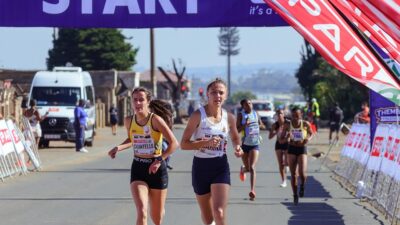Track and field is one of the most dynamic and versatile sports, encompassing a wide array of events that test speed, strength, endurance, and agility. Whether you’re a newcomer looking to participate casually or considering a competitive career, understanding the basics will enhance your experience and performance. This guide serves as an introduction to the core events and techniques in track and field.
The Basics: What is Track and Field?
Track and field is a sport that consists of running, jumping, and throwing events. It is divided into four main categories:
-
Track Events: These comprise various distances and runs, including sprints, middle-distance, and long-distance races.
-
Field Events: These events focus on jumping and throwing disciplines, including high jump, long jump, shot put, and javelin.
-
Relays: These are team events that involve teammates running specified distances in succession while passing a baton.
- Combined Events: These events, such as the decathlon and heptathlon, combine multiple track and field disciplines into a single competition.
Track Events
1. Sprints
Sprints are short-distance races, typically 60m, 100m, 200m, and 400m. Key techniques include:
- Start: Sprinters utilize blocks to launch themselves forward explosively. Practice your reaction time and ensure your position is stable yet aggressive.
- Acceleration: Focus on driving your knees and pumping your arms to build speed.
- Maintaining Speed: Once at top speed, maintain your form—keep your posture upright, and continue driving your arms.
2. Middle-Distance
Middle-distance races, like the 800m and 1500m, balance speed and endurance.
- Pacing: Learn to start off fast but conservatively to avoid burnout.
- Breathing: Develop a rhythmic breathing pattern to maintain stamina.
- Finishing Strong: Save energy for a strong kick in the last lap.
3. Long-Distance
Long-distance events, such as the 5,000m and 10,000m, require endurance and strategy.
- Aerobic Conditioning: Build a strong base with long runs and threshold training.
- Race Strategy: Familiarize yourself with pacing to avoid fatigue.
Field Events
1. Jumps
Field events include various jumping disciplines:
- High Jump: Athletes leap over a horizontal bar. Master the "Fosbury Flop" technique to clear the highest heights by running at an angle and executing a back-first jump.
- Long Jump: Athletes sprint down a runway and jump into a sand pit. Focus on your speed and timing at takeoff, with a good technique to maximize distance.
2. Throws
Throwing events challenge strength and technique:
- Shot Put: Athletes throw a heavy ball using strength and proper technique. Key techniques include the glide or spin methods for the most effective power transfer.
- Discus: Similar to shot put, but athletes spin in a circle. Focus on body alignment and rotational strength to enhance distance.
Relays
In relay events, teamwork is crucial. Passing the baton smoothly can make or break a race. Key components include:
- Start Practice: Work on accelerating and reducing the time taken to pass the baton.
- Communication: Develop cues for when to pass the baton based on your sprint pace.
Training Techniques
To excel in track and field, a structured training regime is essential:
-
Warm-Up and Cool-Down: Always begin with dynamic stretching and end with static stretching to prevent injuries.
-
Strength Training: Incorporate weight training to improve power and prevent injuries.
-
Endurance Workouts: Long runs and interval training enhance stamina.
- Drills: Regularly practice specific drills for your events to refine your techniques.
Conclusion
Track and field is not just a test of physical ability but also a mental challenge. As a beginner, focus on learning the fundamentals, honing your techniques, and enjoying the camaraderie of the sport. Whether you aspire to compete or simply want to enhance your fitness, the diverse events in track and field offer something for everyone. Embrace the journey, and watch your skills develop over time!



